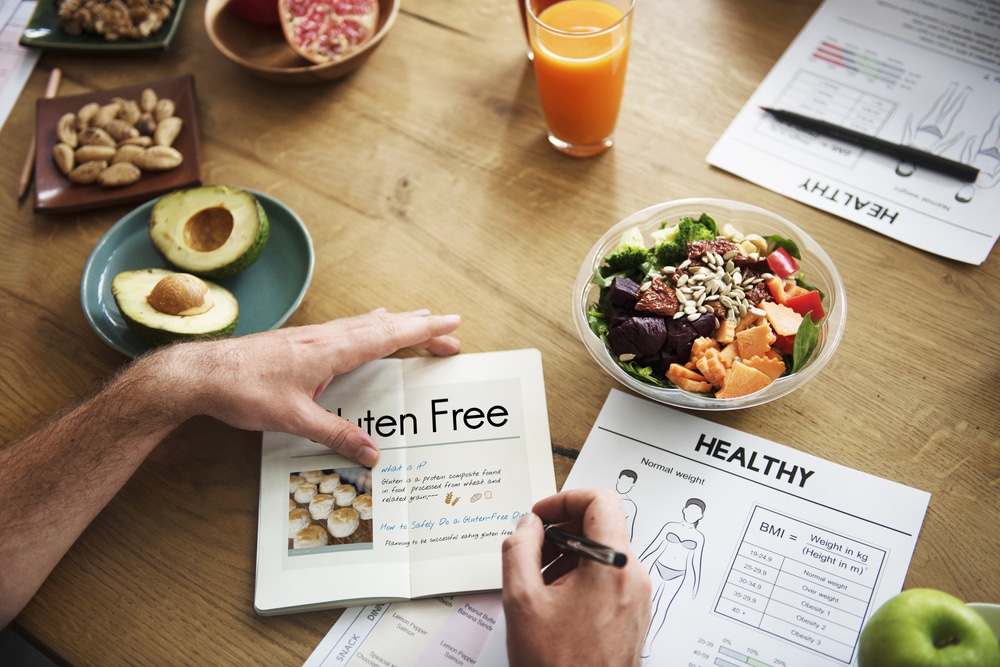
The Pros and Cons of 5 Eating Plans
“You are what you eat.” We’ve heard this term our entire lives, and for good reason—how you fuel your body directly impacts your health. Eating healthy and regular exercise can prevent a myriad of diseases and medical conditions and can even add years to your lifespan. But what is healthy eating? If you ask 10 people how to eat healthy, you may get 10 different answers. That can also be why so many different types of diets and eating plans have become popular. In this article, we’ll examine the pros and cons of 5 eating plans and what you can and cannot eat.
Before changing your diet or starting any kind of meal plan, it’s important to always consult your doctor. Some diets may not be right for individuals with certain health concerns.
The Mediterranean Diet
The Mediterranean Diet became popular as a heart-healthy diet. It consists of healthy fats and primarily plant-based foods, although some fish and poultry are eaten in moderation.
What you can eat:
- Whole grains
- Foods that are rich in “healthy” fats (aka monounsaturated and polyunsaturated fats) like olives and olive oil, as well as nuts and seeds
- Fruits and veggies
- Beans and legumes
- Seafood that is rich in Omega fatty acids
- Chicken, dairy, and other seafood in moderation
- Wine and dark chocolate (in moderation, of course)
Things to avoid:
- Butter
- Red meat
- Foods that are heavily processed and contain a lot of sodium (think frozen meals, breakfast and lunch meats, and canned soups)
- Sugary foods and drinks
- Hydrogenated or processed cooking oil
- White bread and pasta
The nice thing about the Mediterranean Diet is the focus on moderation—the food listed above are to be avoided but can still be enjoyed occasionally.
Pros:
- Nothing is banned completely
- This diet teaches you how to enjoy delicious foods in moderation
- You don’t have to keep track of macros
Cons:
- If you have sensitivities or just plain dislike fish and/or beans, this plan may not work for you
- Requires planning and cooking to avoid processed foods
The Whole30 Program
The Whole30 plan eliminates “trigger” foods that may cause inflammation and reactions. After eliminating them for 30 days, you then introduce those food groups back into your diet one at a time to see if they cause a reaction in your body.
What you can eat:
- Fruits and veggies
- Meat, as long as it is grass-fed, not processed, and organic
- Potatoes
What you can’t eat:
- Dairy (except for ghee, which is clarified butter)
- Legumes (peas and green beans are okay)
- Sugar (that’s all types of sugar, except for fruit)
- Grains
- Gluten
- Sulfites ( you’ll often find these in cured or deli meats)
- Alcohol
This diet also has certain rules you must follow, such as not weighing yourself or counting calories for the duration. Snacking is also forbidden, and you can’t use the “approved” ingredients to recreate your favorite junk foods—for instance, you can’t cut up potatoes to make chips or french fries.
The Whole30 diet is actually quite similar to the Paleo diet. The main difference is Paleo allows you to consume natural sugars and a small amount of wine. Whole30 is also designed to only be followed for a month.
Pros:
- This plan may help you suss out allergies and sensitivities you didn’t know you had (though it’s always recommended to consult your doctor for an elimination diet that works with your unique health needs)
- Removing sugars, gluten, and carrageenan from your diet forces you to read labels. It can be very eye-opening to realize just how many food products contain these items.
- You get to eat potatoes!
- No counting calories or macros
Cons:
- Extremely restrictive—it’s purposely designed this way
- You’ll have to prepare all of your meals yourself, including many sauces and dressings
- It will be nearly impossible to eat out while on this diet
The Ketogenic Diet
You’ve probably heard of this one—people either love it or hate it. The idea of this eating plan is to trick your body into going into a ketosis state and burning fat by lowering your carb and sugar intake. This is very similar to the Atkins Diet, though Atkins gradually allows you to increase your daily carbohydrate levels.
What you can eat:
- Meats of all kinds, including bacon
- Full-fat dairy and cheese
- Vegetables that are low in carbs
- Avocados and avocado oil
- Low-carb fruit like berries
What you can’t eat:
- Anything that is high in carbohydrates (pasta, bread, whole grains, and even some fruits and vegetables)
- Sugar
Pros:
- Many keto followers love being able to enjoy rich, full-fat foods while losing weight
- The only macros you need to track are sugar and carbs
Cons:
- You can’t enjoy certain fruits or vegetables
- Eliminating entire food groups can be hard to maintain long-term
- Ketosis can be harmful to individuals with certain health issues, such as those with chronic kidney disease
Intuitive Eating
Diet culture has been around for decades, and as a result, many of us have a complicated relationship with food. Intuitive eating encourages you to listen to your body’s cues on when and what to eat.
What you can eat:
- Anything you’d like, as long as you’re listening to your body and honoring its needs and not looking at food as being good or bad
What you can’t eat:
- Nothing is restricted
Pros:
- This type of lifestyle can help alleviate the guilt that is often associated with certain foods. It may also help those suffering from eating disorders
Cons:
- Your doctor or dietician may prescribe certain eating plans to help treat health conditions, so intuitive eating may not be right for you
- It may be hard to wrap your mind around the concept at first
Gluten-Free Eating
Gluten is a protein found in many grains, including barley, wheat, and rye. Individuals with Celiac disease or gluten sensitivities can suffer auto-immune side effects from consuming gluten. Gluten-free eating plans reduces these symptoms.
What you can eat:
- Anything that doesn’t contain gluten
- Certified gluten-free food substitutions (these are made in a facility separate from where items with gluten are made)
What you can’t eat:
- Any product containing gluten. This eliminates a lot of bread and pasta, although there are many gluten-free substitutions available
- Foods that may have been cross-contamination due to foods with gluten being prepared in the same facility
Pros:
- If you have Celiac disease or gluten intolerance, eating gluten-free may help various issues, such as reducing inflammation or improving energy
Cons:
- The perception of gluten has been twisted over the years, causing many individuals to believe gluten is harmful to everyone. However, if you don’t suffer from gluten sensitivities, going gluten-free can negatively impact your health.
When looking for the ideal meal plan, always consult your doctor or dietician. Our bodies are unique, and we have different nutritional requirements as we age. A medical professional familiar with your health history is your greatest resource when finding the perfect diet for you.

Join our Senior Wellness Society for the latest news on Medicare and tips for healthy living in San Diego!
Sign up now ›Are you looking for specialized medical care in San Diego?
Our directory has more than 850 doctors in San Diego County of various specialties who are available to help you.
Find a doctor